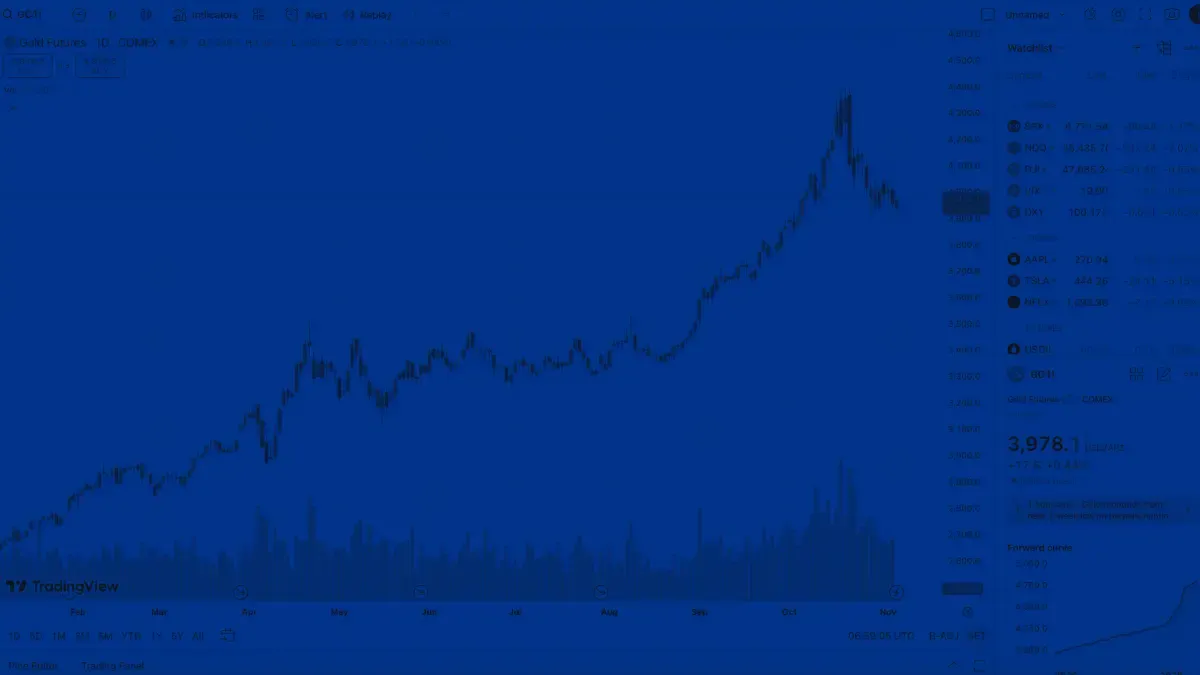Patience over speed. Analysis over reaction. Swing trading represents a fundamental shift from the hyperactive scalping mentality toward strategic position-holding that captures larger market movements. This methodology demands different skills, risk management approaches, and psychological frameworks than rapid-fire trading styles.

The Strategic Foundation of Swing Trading
Swing traders operate on expanded timeframes that span days to weeks, targeting price movements that develop gradually through market cycles. Unlike scalping strategies that extract small profits from tight price ranges, swing approaches seek substantial moves that justify holding positions through overnight gaps and extended volatility periods.
The core philosophy centers on identifying and riding momentum waves rather than capturing minute price fluctuations. This requires broader market analysis, patience during position development, and tolerance for temporary adverse moves that scalpers would immediately exit.
Time Horizon and Market Perspective
Swing investing principles translate effectively to proprietary trading environments where capital allocation supports longer holding periods. The extended timeframe allows for more thorough analysis of market structure, trend development, and technical setup validation before position entry.
Swing approaches typically analyze daily and weekly charts to identify major support and resistance levels, trend channels, and momentum patterns that develop over multiple trading sessions. This broader perspective filters out market noise that can mislead shorter-term strategies.
Risk-Reward Profile Advantages
Swing positions target larger price movements that justify wider stop-loss placement while maintaining favorable risk-reward ratios. A typical swing trading strategy might risk 2-3% of account value to capture 6-9% gains, creating mathematical advantages that support long-term profitability despite lower win rates.
This expanded risk-reward framework reduces the pressure for high win percentages that characterizes scalping approaches. Swing traders can maintain profitability with 40-50% win rates if their average winners significantly exceed average losers.
Ready to dive in?
Explore our challenge accounts, pick the one that fits you best, and start your journey to getting funded.
Explore AccountsTechnical Analysis for Swing Positions
Effective swinging relies on technical analysis tools designed for broader market movements rather than minute-by-minute price action. The best indicators for swing trading include moving average systems, momentum oscillators, and volume-based confirmations that signal trend strength and reversal potential.
Trend Identification Systems
Moving average crossovers, particularly 20/50 day combinations, provide reliable trend identification for swing positions. These systems filter short-term volatility while highlighting sustainable directional moves that support multi-day holding periods.
Trend channel analysis identifies key support and resistance zones where swing positions can be initiated with logical stop-loss placement. Channel boundaries often provide natural profit targets that align with swing trading objectives.
Momentum and Volume Confirmation
RSI divergences signal potential trend reversals that create swinging opportunities, particularly when combined with volume confirmation. Decreasing volume during price advances suggests weakening momentum that swing traders can exploit through counter-trend positions.
Volume-weighted average price (VWAP) deviations indicate overextended conditions that precede the mean reversion moves swing strategies target. Significant deviations from VWAP levels often mark optimal entry points for contrarian swing positions.
Psychological Requirements and Trader Personality
Swing trader success demands psychological characteristics that differ significantly from scalping mentalities. The extended holding periods require patience, conviction, and emotional stability during temporary adverse price movements that would trigger immediate exits in faster strategies.

Patience and Conviction
Swing positions often move against traders initially before developing into profitable trades. This temporary adversity tests trader conviction and requires confidence in analysis that sustains positions through uncomfortable periods.
The ability to ignore short-term price noise while focusing on broader market development separates successful swing traders from those who exit positions prematurely due to minor volatility.
Data-Driven Decision Making
Swing trading rewards analytical traders who base decisions on systematic research rather than emotional reactions to price movements. The extended timeframes allow for thorough analysis of multiple factors before position entry, reducing reliance on intuitive or impulsive decisions.
Successful swing traders develop standardized processes for market analysis, position sizing, and exit criteria that remove emotional interference from trading decisions. This systematic approach proves essential for managing positions held through multiple market sessions.
Risk Management Complexities
Trading swing introduces unique risk management challenges that require different approaches than scalping strategies. Extended holding periods expose positions to overnight gaps, news events, and extended volatility that can significantly impact position values.
Gap Risk and Overnight Exposuresswing trading examples
Positions held overnight face gap risk that can cause immediate losses exceeding predetermined stop-loss levels. Swing traders must account for this additional risk through position sizing adjustments and gap analysis when entering positions before market closures.
Economic announcements, earnings releases, and geopolitical events can create significant gaps that impact swing positions regardless of technical analysis accuracy. Risk management systems must account for these factors when determining position sizes and stop-loss placement.
Extended Position Monitoring
Unlike scalping strategies that conclude within minutes, swing positions require ongoing monitoring and management across multiple trading sessions. This extended oversight demands different time management approaches and monitoring systems than rapid-fire strategies.
Position management decisions must balance the swing trading objective of capturing larger moves against the need to protect capital from adverse developments. This balance requires experience and judgment that develops through practice and systematic evaluation.
Implementation Strategies for Prop Environments
Proprietary trading environments often favor swing approaches due to their superior risk-adjusted returns and reduced execution costs compared to high-frequency strategies. The longer holding periods align with prop firm risk management preferences while providing opportunities for substantial profits.
Capital Allocation Advantages
Swing positions typically require less frequent position adjustments, reducing transaction costs and slippage that can erode profits in high-frequency strategies. This cost efficiency makes swing approaches attractive to prop firms focused on net profitability rather than gross trading volume.
The extended holding periods also allow for larger position sizes relative to account equity, as swing traders can afford wider stop-losses that accommodate normal market volatility without premature exits.
Firm Risk Management Alignment
Many proprietary firms prefer swing approaches because they provide more predictable risk profiles than scalping strategies. The broader stop-losses and extended timeframes allow risk managers to better understand and monitor trader exposure across multiple positions.
Futures trading environments particularly suit swing strategies due to the leverage available and the trending characteristics of many futures markets. Commodity and index futures often exhibit sustained directional moves that swing strategies can capture effectively.
Practical Examples and Implementation
Examples of swing trading demonstrate the methodology across different market conditions and instruments. A typical swing trade might involve buying index futures near major support levels with stops below recent lows and targets at previous resistance levels.
Market Structure Analysis
Swing trades often develop from weekly chart analysis that identifies major support and resistance levels where institutional traders are likely to enter positions. These levels provide logical entry points with clear stop-loss placement and profit targets.
Range-bound markets create swing opportunities at support and resistance boundaries, while trending markets offer pullback entries that align with the dominant direction. The key lies in identifying which market structure is present and selecting appropriate swing strategies.
Position Development and Management
Successful swing positions typically develop through multiple phases: initial entry based on technical setup, position monitoring during development, and systematic exit when targets are reached or conditions change.
Options for swing trading include scaling into positions as setups develop, partial profit-taking at intermediate targets, and trailing stops that protect profits while allowing for extended moves. These management techniques help optimize risk-adjusted returns.
Technology and Platform Requirements
Swinging requires a different technological infrastructure than scalping approaches. The reduced emphasis on execution speed allows for more focus on analytical tools, charting capabilities, and position management systems.
Analytical Tools and Charting
Comprehensive charting packages with multiple timeframe analysis capabilities support the broader market perspective required for swing trading. Historical data access, indicator libraries, and custom study development enhance swing trading analysis capabilities.
Portfolio management tools that track multiple positions across different instruments help swing traders monitor their overall exposure and risk distribution. These tools become essential when managing several swing positions simultaneously.
Execution and Order Management
While swinging doesn't require the millisecond execution speeds needed for scalping, reliable order execution and position monitoring remain critical. Platform stability during volatile market conditions ensures that stop-losses and profit targets execute as intended.
Advanced order types, including bracket orders and trailing stops, help automate position management tasks that support swing trading objectives. MyFundedFutures provides platforms with sophisticated order management capabilities that support swing trading methodologies.
Performance Evaluation and Optimization
Swing trading performance evaluation requires different metrics than scalping approaches due to the extended holding periods and different risk-reward profiles. Traditional metrics like win rate become less important than risk-adjusted returns and maximum drawdown management.

Key Performance Metrics
Swing trading success metrics focus on risk-adjusted returns, average holding periods, and maximum adverse excursion during position development. These metrics provide insight into strategy effectiveness and risk management quality.
The ratio of average winners to average losers becomes particularly important in swing trading, as the extended holding periods must justify the additional risks associated with overnight and weekend exposure.
Systematic Evaluation Process
Regular strategy evaluation helps identify market conditions that favor swing approaches and those that require strategy modifications. This systematic review process ensures that swing strategies adapt to changing market dynamics while maintaining their core characteristics.
Trade journaling becomes essential for swing traders due to the extended position holding periods and complex decision-making processes involved in position management. Detailed records help identify patterns in successful and unsuccessful trades that guide strategy refinement.
The Swing Trading Edge
Swing trading strategy development requires patience, analytical rigor, and risk management capabilities that differ significantly from scalping approaches. The methodology rewards traders who can analyze broader market patterns, maintain conviction during temporary adverse moves, and systematically manage positions across extended timeframes.
Success depends more on strategy development and psychological discipline than execution speed or market timing precision. Traders who align their analytical abilities with swing methodologies while developing appropriate risk management systems achieve superior risk-adjusted returns in proprietary trading environments.
This material is provided for educational purposes only and should not be relied upon as trading, investment, tax, or legal advice. All participation in MyFundedFutures (MFFU) programs is conducted in a simulated environment only; no actual futures trading takes place. Performance in simulated accounts is not indicative of future results, and there is no guarantee of profits or success. Fewer than 1% of participants progress to a live-capital stage with an affiliated proprietary trading firm. Participation is at all times subject to the Simulated Trader Agreement and program rules.
Rate this article
Related Posts
Read our most popular posts
Which Prop Firms Offer Daily Payouts and How Do They Work?
Daily payout prop firms let traders withdraw profits far more frequently than traditional models, sometimes even from the very first funded day. Instead of waiting weeks for a payout cycle, traders can request withdrawals every day, subject to rules on drawdown, buffers, and minimum amounts. This guide explains how daily payout structures work, which futures prop firms are known for fast withdrawals, what to watch out for in the fine print, and how MyFundedFutures’ Rapid plan fits into this newer payout landscape.
5 Best Prop Firms With TradingView Integration
TradingView's powerful charting tools and real-time data make it a favorite among futures traders, but not every prop firm lets you trade directly from your charts. We've identified five firms that offer true TradingView integration, making it easy to analyze, execute, and scale without switching platforms.
What Is MyFundedFutures Scale Account and Is It The Right Plan For You?
The MyFundedFutures Scale Account is a middle-tier evaluation plan that balances affordability with growth potential. The scale plan offers weekly payout opportunities with increasing withdrawal limits, no daily loss cap, and a clear path to live funding after just five consecutive payouts.


